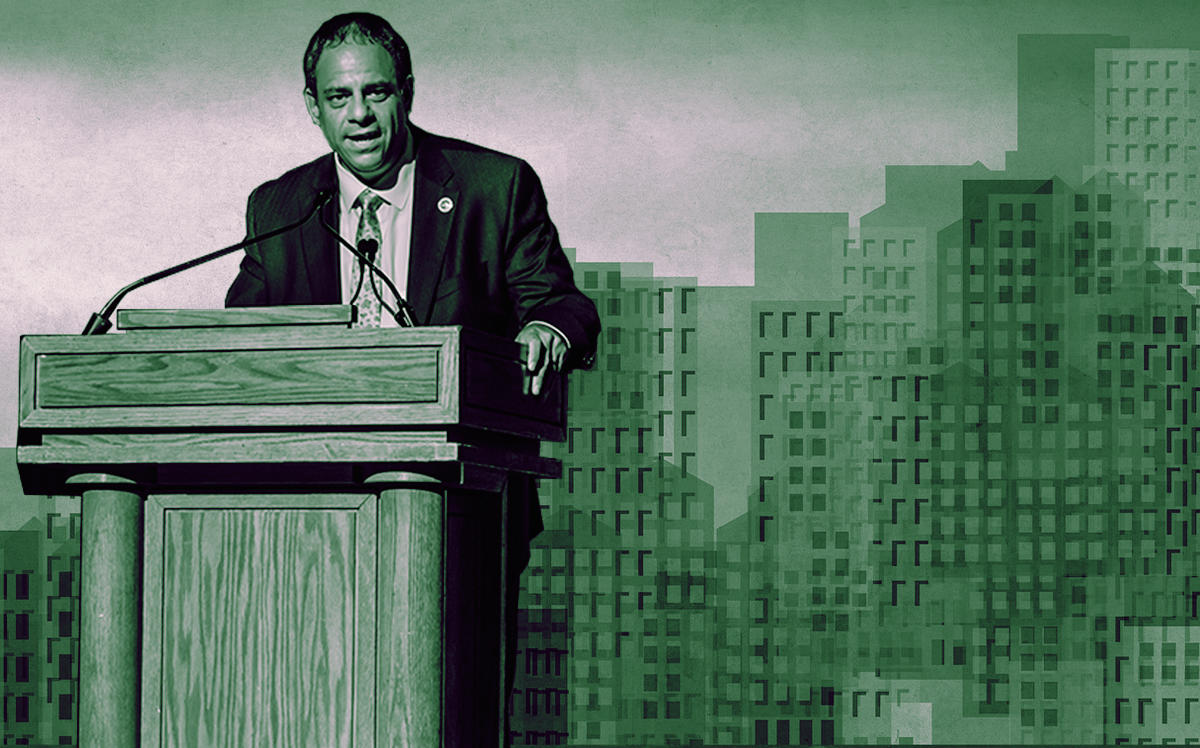Trending
Council advances bill to cap emissions at some rent-regulated buildings
Measure would subject more multifamily properties to Local Law 97

UPDATED, Sept. 22,2020, 1:41 p.m.: When the city approved strict carbon emission caps last year, officials exempted properties with any rent-stabilized apartments.
But the City Council is moving forward with a bill that would require certain rent-regulated apartment buildings to meet the standards laid out in Local Law 97, which calls for a 40 percent reduction in citywide emissions by 2030 and 80 percent by 2050. Under the law, most properties larger than 25,000 square feet must limit emissions based on building type and size.
A new bill, introduced in May and sponsored by Queens Democrat Costa Constantinides, would revise Local Law 97 to include buildings where up to 35 percent of units are rent-regulated. The Committee on Environmental Protection held a hearing on the measure Tuesday morning — an important step if it is to become law.
Following the passage of Local Law 97, the Real Estate Board of New York criticized the measure for — among other reasons — excluding “more than 50 percent of New York’s built environment from its carbon emission limits.” REBNY pointed to the exemption of buildings with at least one rent-regulated unit, as well as public housing, houses of worship and city-owned properties.
Essentially, the trade group saw the measure as shouldering some property owners with a burden that others were allowed to ignore.
Separately, owners have warned that the pandemic could make Local Law 97 compliance much more difficult, as they grapple with drops in rent revenue.
Michael Rothschild, vice president at property management firm AJ Clarke Real Estate, said Constantinides’ bill unfairly targets buildings with high percentages of market-rate apartments.
“It is an odd metric to use,” he said. “They are not evaluating the age or size, but rather the type of lease.”
REBNY estimates that more than 1,600 buildings would be affected by the measure. In prepared testimony, the group called on the City Council to “undertake a rigorous analysis of this proposed legislation as any expansion of local carbon reduction mandates must be reflective of buildings’ physical and financial realities, particularly now in a moment of economic downturn.”
The Community Housing Improvement Program said that because the cost of retrofits can’t be passed along to renters, the City Council doesn’t care about the financial toll of Constantinides’ bill. “There are thousands of small- and medium-sized housing providers who are struggling under the current financial climate and cannot fathom how to begin to budget for such a project,” the group testified Tuesday.
But Constantinides said the bill should not come as a surprise to anyone in the industry. When the state legislature changed the Major Capital Improvements program last year, it limited rent increases through the program to 2 percent and made it so that such increases could only be applied to properties where more than 35 percent of the apartments are rent-regulated.
That change paved the way for the city to subject some rent-regulated properties to Local Law 97, as the new 35 percent threshold could be used to prevent landlords from passing the costs of meeting emission caps onto renters through MCIs.
“Big Real Estate complained when we passed Local Law 97 that rent-regulated buildings weren’t included,” Council member Costa Constantinides said in a statement. “Now, as many landlords continue to collect rent from struggling New Yorkers through the pandemic, they say it cannot be done. Which is it?”
Editor’s note: This story was updated to include testimony from real estate trade groups.




